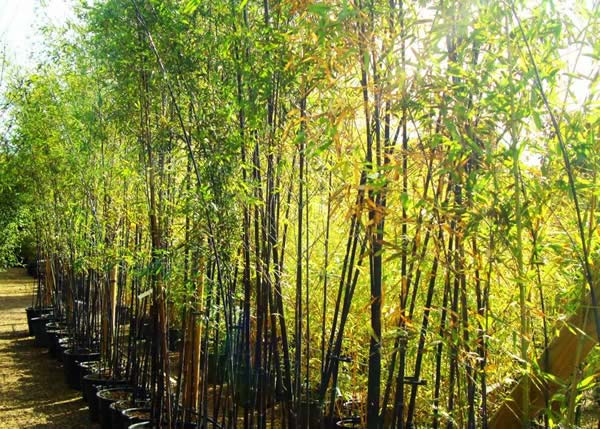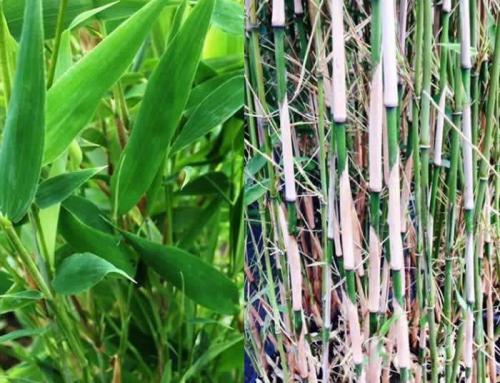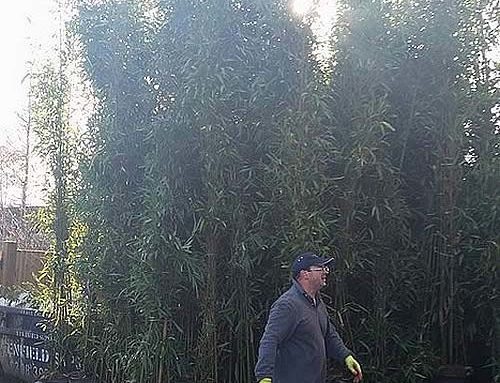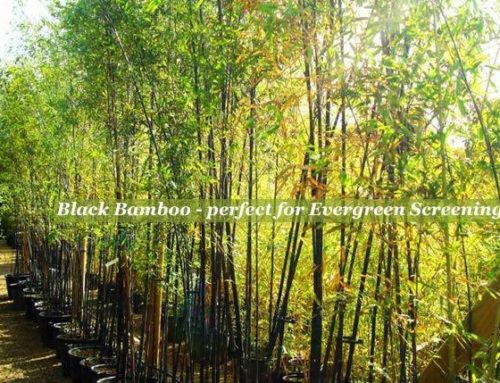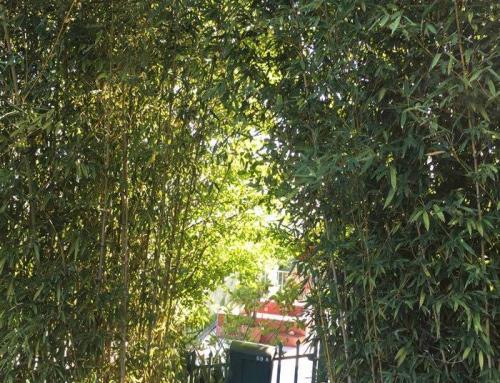Hardy Bamboo Plants
Though often used for screening purposes Bamboo plants have many other uses in the garden. Their considerable height (depending on variety), but comparatively small ground space, means bamboo can be used even in the smallest gardens and they are one of the best plants to plant near water along with tree ferns.
One of the best of the hardy bamboo plants for lushness of foliage is the Phyllostachys Aurea growing fairly slowly to around 15-20ft (6m) it holds its foliage well. Their leaves are bright green and have thick yellow/green canes. Phyllostachys Aurea does tend to be very well behaved and makes an excellent hedge or ornamental plant.
Black Stemmed Bamboo
Probably the most popular and best-selling of hardy bamboo plants is the black stemmed Phyllostachys Nigra. As a specimen bamboo it is certainly the most eye-catching. The canes are mottled brown the first year and mature to black in the second year onwards. It is not quite so dense in foliage as the Phyllostachys Aurea but as the visibility of the canes is more of a priority this is not a drawback. The black stemmed bamboo also has elegant very dark green leaves.There are hundreds of varieties of bamboo and most are fully hardy. A shorter variety which has a tropical look is the Pseudosasa Japonica – Bambusa Metake. This short clump forming bamboo has olive/green canes and large dark green narrow leaves. It is easily maintainable and has a medium speed of growth as a hedge or ornamental bamboo. Full sun/partial shade/full shade. Extremely hardy to -24c.
Another interesting hardy bamboo plant is the Phyllostachys Aureosulcata or Yellow Groove Bamboo extremely hardy with lemon yellow canes which become orange when exposed to sunlight. Prefers full sun but can be grown in partial shade.
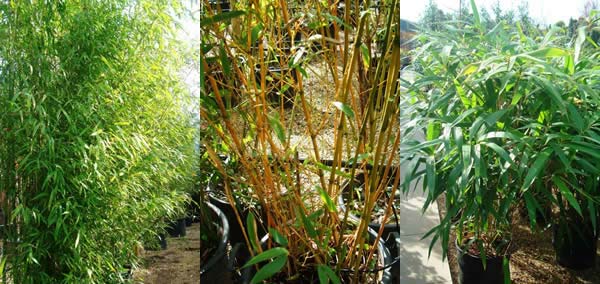
Phyllostachys Aurea | Phyllostachys Aureosulcata | Pseudosasa Japonica – Bambusa Metake bamboo plants
An attractive Bamboo referred to as a dwarf variety but attaining a medium size is Bamboo Pleioblastus Simonii Variegatus this variety is very hardy down to -15 and has intermittent variegated leaves which are very attractive. A clump forming bamboo this is well suited to screening, low hedging and ground cover uses.
In passing I would just mention that sometimes bamboo still have a reputation for being invasive –something which was the case a few decades ago, but nowadays only the relatively well behaved varieties are sold in retail plant centres. Root barriers are available if there is a requirement to keep the bamboo tightly controlled and this will stop any new shoots sprouting up in unwanted areas. (Root barrier is a thick plastic membrane buried vertically at a depth of around 50-100cm around the edge of the planting border).
How to Take Care of Bamboo Plants
All bamboos need watering regularly over the growing months (April to October) and disliking drying out. Hardy Bamboo plants are better suited to planting in the ground but require well-drained areas. They will not tolerate boggy soil where the water sits around their roots as this may cause the roots to rot. If kept in pots they must not dry out and the pots must be big enough to allow sufficient moisture to reach the roots and be well-draining. Feeding is essential with an all-purpose liquid feed particularly when they produce their new canes each year.
Bamboo for Japanese Style Gardens
Bamboo are a very popular plant particularly for contemporary, modern and Japanese style Gardens (although from a design point of view they well work incorporated with any garden scheme). Often used nowadays to form a hedge which is not too dense their elegant shaped foliage allows light to spill through. Bamboo are also desirable for the calming rustling sound made when the wind blows through their leaves.
Bamboo as a Screening Plants
When it comes to using bamboo in the garden nothing is better especially for awkward situations such as corners. It can serve as a hedge/screen or make a nice ornamental feature planted by water or on a patio. The varieties with strong coloured canes are very good for this.
Bamboo plants are a must for any garden large or small, the sound of the wind rushing through their leaves is very relaxing and they create instant architectural structure to any garden.

